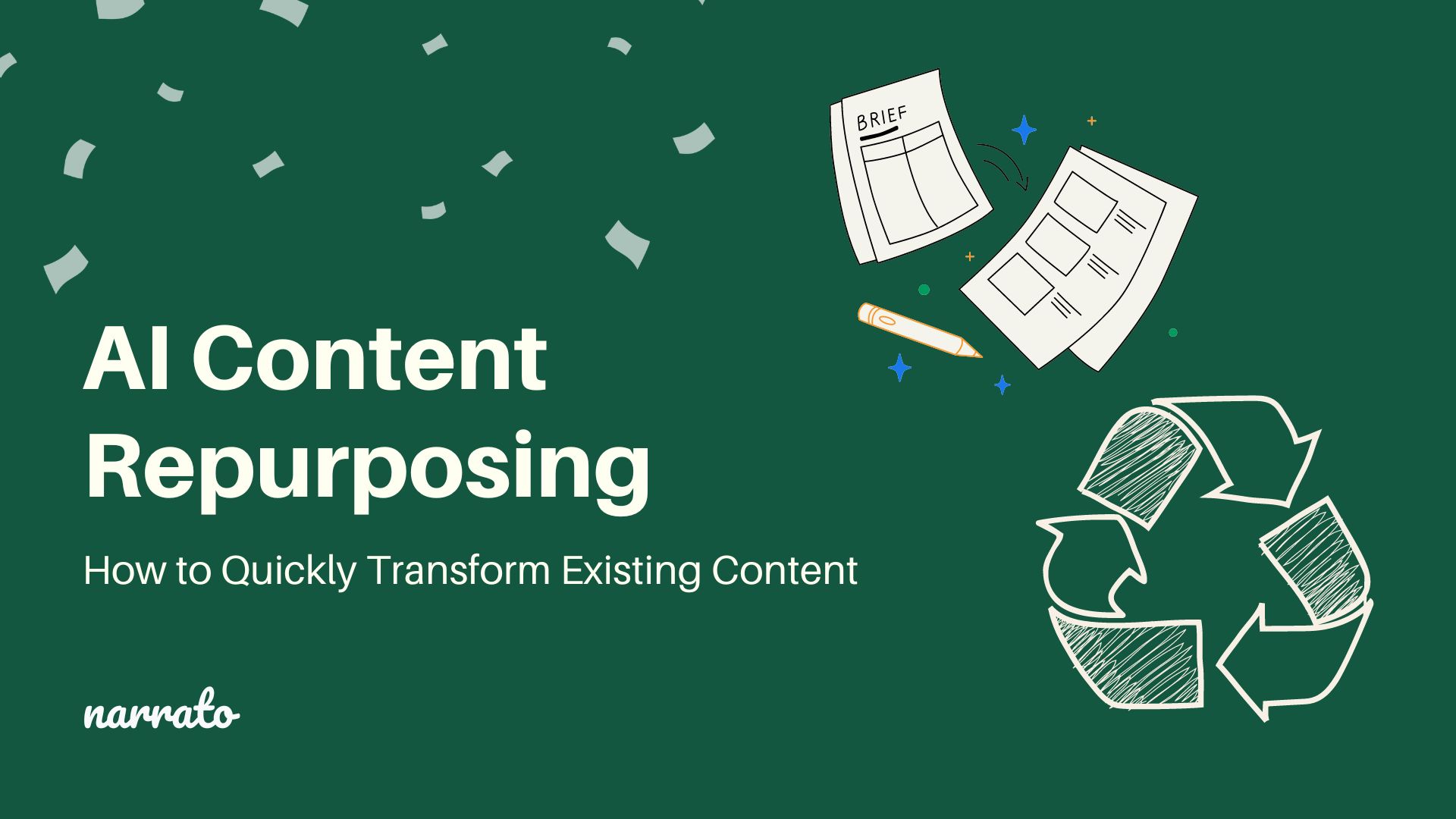To get the most out of the content you create, transforming it into different formats that could potentially be more engaging is not a bad tactic to practice. And when budgets are tight, and resources are spoken for, content repurposing is a great way to get the most bang for your buck.
Other benefits of repurposing content include:
- Maximizing content ROI
- Reaching diverse audiences
- Enhancing content discoverability
- Improving SEO and search ranking
- Adapting to evolving platforms and trends
- Leveraging evergreen content
But what if the process of repurposing content could be made exponentially easier and more effective?
AI technology is revolutionizing the way we write emails, blog posts, and repurpose content. It’s helping marketers automate repetitive tasks, tap into advanced content analysis, and generate alternative versions or adaptations of content. But something spectacular that you may not have explore yet is AI content repurposing. Yes, AI can help repurpose almost anything into anything.
We’ve already been discussing a lot about the best practices for creating content with an AI writer. In this article, we’ll discuss all about repurposing content using AI: what it is, how it’s beneficial, and various strategies you can employ to improve your output. Let’s dive in.
TL;DR Here’s a quick video summarizing this article.
What is AI content repurposing?
Some examples of AI content repurposing
How to use AI for content repurposing
Other awesome tools for AI content repurposing
Best practices to adopt when using AI for content repurposing
The benefits of AI content repurposing
The challenges with using AI to repurpose content

What is AI content repurposing?
AI content repurposing refers to the use of artificial intelligence technologies and tools to automate and enhance the process of repurposing content. AI algorithms and machine learning techniques can analyze and understand the content, extract key information, and generate new versions or adaptations in different formats.
Some examples of AI content repurposing
Here are some examples of AI content repurposing:
- Text-to-Speech (TTS): Repurpose blog posts or articles into audio content by converting text to natural-sounding voice recordings. This allows users to listen to the content while on the go or doing other activities.
- Image-to-Text: Repurpose images into social media posts, summaries, newsletters, or even blog articles. AI can very clearly decipher the contents of an image and turn it into text based content that is relevant and accurate.
- Speech-to-Text (STT): Repurpose video or audio content with AI, such as podcasts or webinars, into transcribed text. This enables search engine optimization (SEO), accessibility for hearing-impaired individuals, and repurposing content for blog posts or social media quotes.
- Video Transcription and Subtitling: Utilize AI to automatically generate transcriptions for videos. Transcripts can be repurposed as captions for better accessibility or translated into multiple languages to reach a broader audience.
- Content Summarization: Condense lengthy articles, research papers, or blog posts into concise and informative summaries. These summaries can be used in email newsletters, social media posts, or as teaser content.
- Language Translation: Translate written content, videos, or audio recordings into multiple languages using AI language translation tools. This helps to expand the global reach of the content.
- Content Personalization: Leverage AI algorithms to personalize content based on user preferences, behavior, or location. This includes personalized recommendations, dynamic website content, or customized email newsletters.
- Image-to-Text: Extract text from images or screenshots, which can be used for indexing and search purposes or to convert visual content into written form.
- Content Curation: Use AI-powered tools to curate and organize existing content into themed collections, resource lists, or “best of” compilations.
- Data Visualization: Convert raw data into visually appealing and easy-to-understand infographics, charts, and graphs using AI-based data visualization tools.
- Article Spinning: Rephrase or rewrite articles automatically using AI-based natural language generation (NLG) tools, producing variations of the original content for diverse platforms.
- Social Media Content Generation: Automatically create social media posts based on longer-form content, such as blog posts or videos, to streamline content distribution on social platforms.
- Content Reformatting: Optimize content for different platforms or devices by adapting its layout, size, and structure. For example, transforming a long article into a series of bite-sized social media posts.

How to use AI for content repurposing
AI content repurposing is a very simple and straightforward process. The AI tool usually requires simple inputs like the input content type (the content you want to repurpose), the output type (what you want to repurpose it to), and a few basic details like length an tone of the output.
That is all that’s required from you. Once you provide the input content, the AI will work its magic and repurpose it into your desired format for your preferred channel.
Narrato AI is a complete suite of AI content creation and management tools that can help you leverage AI at every stage, starting from content planning, creation, repurposing to publishing. The AI content repurposing tool on Narrato is a class apart, allowing you to transform any existing content into different formats for distribution on any channel. This even includes repurposing images, videos and podcasts into blog posts, social media posts, summaries or more.
Here are some of the top use cases of the AI content repurposing tool that you could leverage.
Repurpose blog posts to social media posts, summaries, newsletters and more
To repurpose your blog post into one or multiple social media posts for promotions, you can simply use the Repurpose AI template on Narrato’s AI writer. Choose “Blog” from the first dropdown and “Social media post” from the second. You can provide additional instructions as well, such as length of the post or which section of the blog to cover.
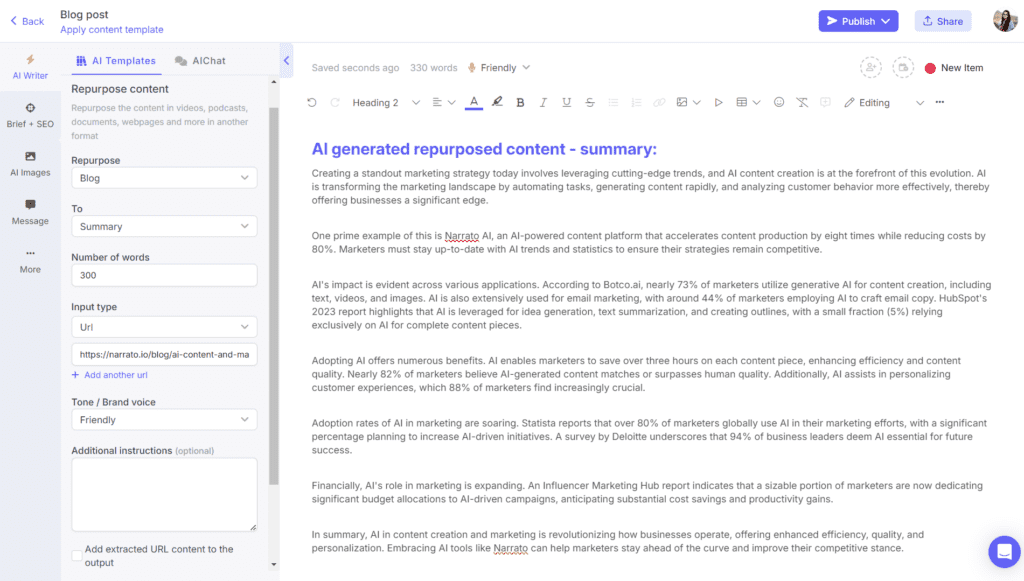
You can also turn your blog posts into newsletters for promoting to your email subscribers and reaching a wider audience. The process is the same, choose the type of content you’re repurposing and what you want to repurpose it to. Add your instructions, pick a tone, and generate.
Repurpose documents to summaries, press releases, web pages or other content
You can turn documents and PDFs, such as research reports, technical documents and others, into any content using the repurposing template as well. You can upload the document as a file or can simply copy and paste the text you want to repurpose. It takes only a few seconds for the repurposed content to be generated. Here we’ve generated a press release from a report.

You can repurpose documents into any type of content like a compelling web page, social media post, blog post, etc. using this tool as well. The content repurposing AI analyzes the input data and turns it into professionally crafted, compelling copy for your website, complete with a pitch and a CTA.
If the output format you need is not on the drop down list, you can choose the “Other” option and define the format yourself.
Repurpose videos to summaries, social media posts, blog posts or others
The AI repurposing tool can help you summarize videos and podcasts too. You can add the video or podcasts as a file or a URL and choose Summary as the output format. The tool will give you a concise summary along with a full transcript, as shown below.

You can also repurpose videos into blog posts, social media posts and other content.
Repurpose images to social media posts, blog posts, press releases and more
Another interesting use case of the AI content repurposing tool is repurposing images into text content. You can upload any image and repurpose it into a social media post, blog post, summary, caption, or something else.
The AI image-to-text generator on Narrato does this for you.

This can be a great way to create content around events, travel, products, and much more.

Search and repurpose news content
The search and repurpose news content template on Narrato is a unique AI tool that helps you find and curate industry news articles. You can select these articles and repurpose them into social posts, blog posts and summaries with a single click.

These are only a few of the use cases, but with Narrato’s AI repurposing tool, you can transform any content to meet the demands of a different audience and platform. Your input content like documents, text, videos, web pages, podcasts, blogs, press releases, presentations, or newsletters can be repurposed into social media posts, blog posts, web pages, newsletters, or summaries.
Apart from the repurposing template, Narrato also helps you repurpose your blog posts and web pages into social media content using the tons of social templates under the AI social media post generator, including generating posts from a URL or notes. You can create custom AI templates to repurpose any type of content as well, using your own content repurposing prompts.
AI Content Genie – the AI content autopilot – is also a content repurposing tool in a way. It generates social posts from your website content automatically every week or on demand.
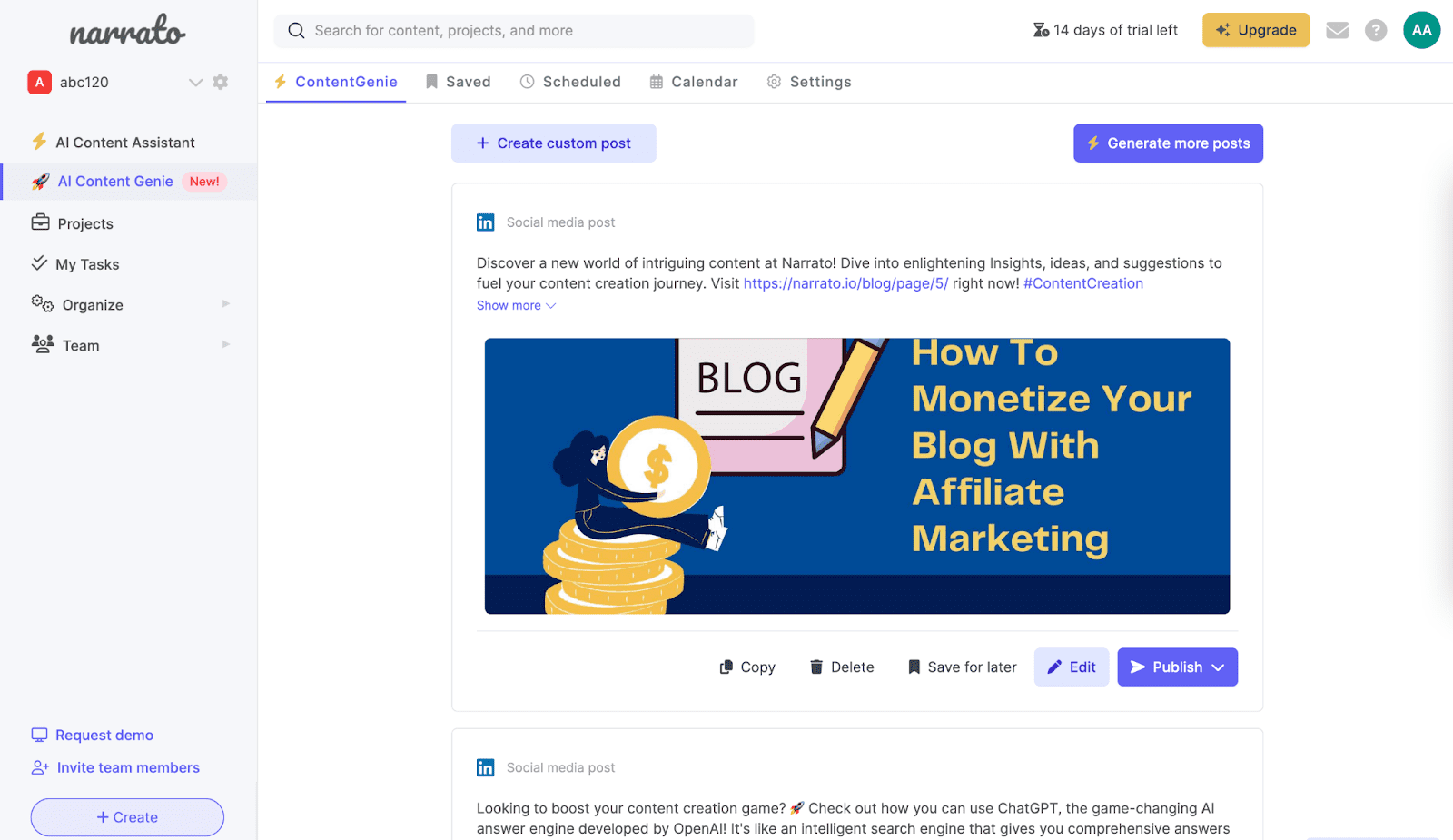
Narrato’s AI Content Assistant also has an AI text summarizer using which you can summarize and shorten content for posting on different channels. Or you could use the Text Simplifier and the AI Content Improver to rewrite complex content in simpler terms, for a wider audience, suitable to publish on various platforms. There is an AI Translator as well for translating and repurposing content in 20+ languages.
There are over a 100 AI templates available on Narrato that you can use to create content in several different formats. And the platform also offers content workflow management and team management features, that allow you to do it all in one place!

Awesome tools for AI content repurposing
1. OpenAI GPT-3
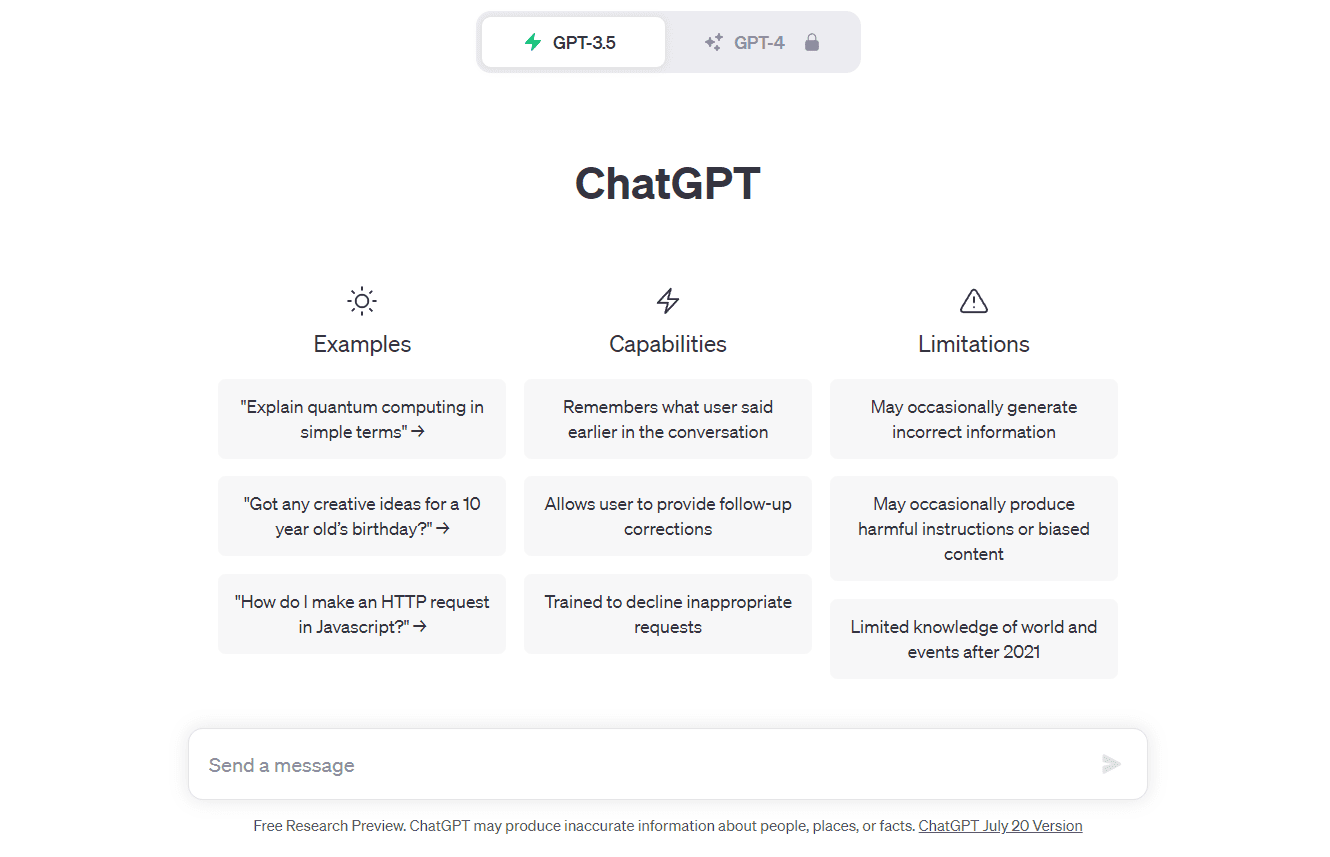
OpenAI’s GPT-3 (Generative Pre-trained Transformer 3) is a powerful language model that can be utilized for various content repurposing tasks, including article summarization, content rewriting, and language translation. Make sure to use the right ChatGPT prompts for summary generation or whichever use case you’re using it for, to get quality output.
2. Canva
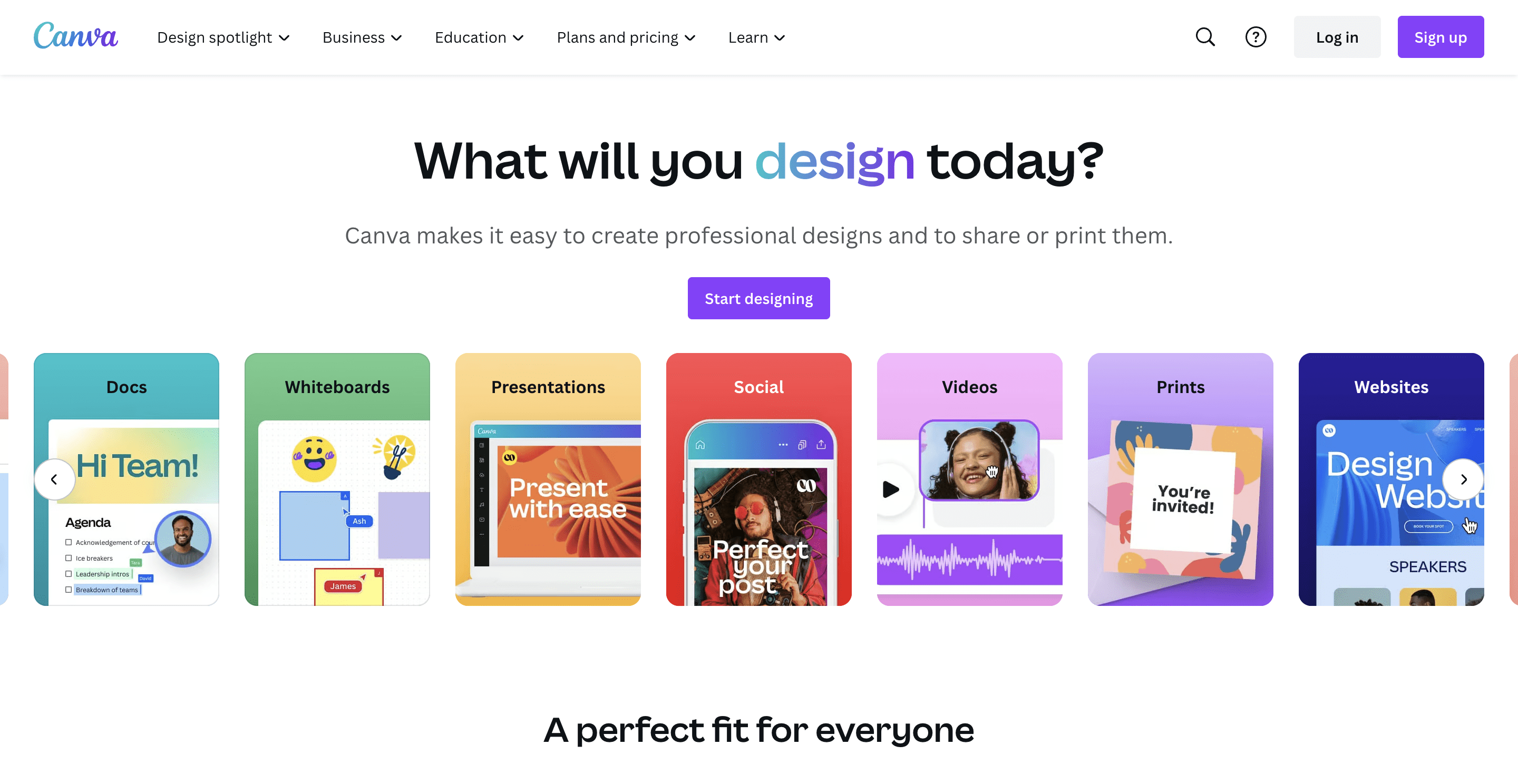
Canva is a popular design tool that uses AI to help you create graphics, infographics, and other visual content for repurposing and sharing on various platforms.
3. Lumen5
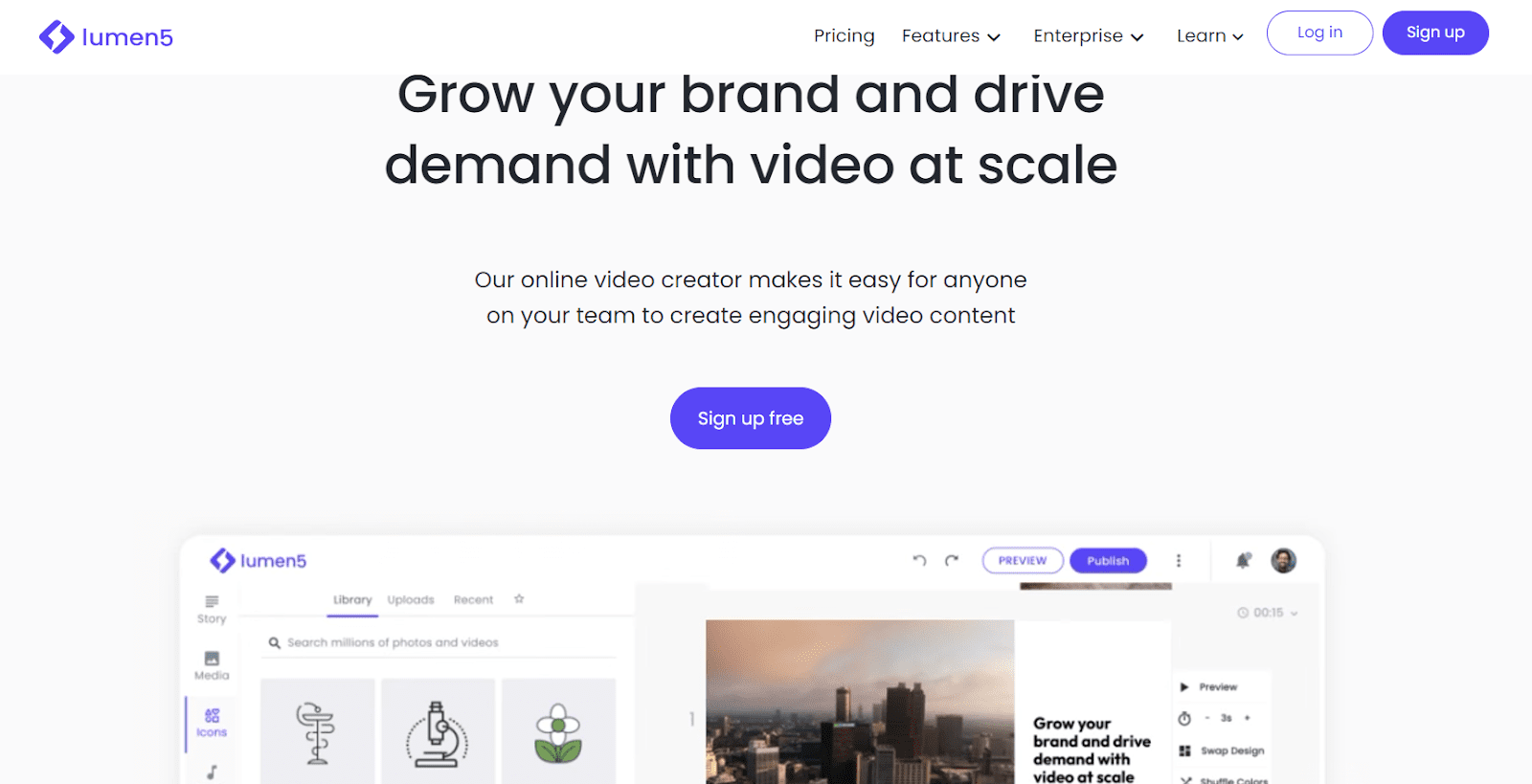
Lumen5 is a video creation platform that uses AI to turn blog posts and articles into engaging video content. It automatically generates video scenes based on the article’s content and allows customization with images, music, and branding.
4. Datawrapper

Datawrapper is an AI-powered data visualization tool that helps create charts, graphs, and interactive maps for presenting data-driven content.

Best practices to adopt when using AI for content repurposing
When implementing AI content repurposing strategies, consider the following approaches:
1. Identify valuable content assets
Start by identifying existing content assets that have performed well or possess evergreen value. These could be blog posts, whitepapers, videos, or podcasts. Focus on content that can be repurposed into different formats or adapted for various channels.
2. Define repurposing goals
Clearly define your goals for content repurposing. Determine the target audience, platforms, and formats you want to reach. For example, you might aim to repurpose blog posts into videos for social media or create infographics from research reports for visual platforms.
3. Leverage AI-powered tools
Explore AI-powered tools and platforms specifically designed for content repurposing. These tools can automate processes, provide insights, and generate content adaptations. Evaluate different options to find the tools that best align with your needs and goals.
4. Analyze audience preferences
Use AI analytics tools to analyze user behavior, engagement metrics, and demographics. Gain insights into audience preferences for different content formats, or blog writing formats, platforms, or topics. This data will guide your content repurposing decisions and ensure you are targeting the right audience.
5. Repurpose into multiple formats
Experiment with repurposing content into various formats. AI algorithms can help automate the process by transforming written content into different media formats or generating alternative versions.
AI algorithms can help you repurpose written content into:
- Infographics and visual presentations
- Videos
- Podcasts
- Infographics
- Slideshows
- Interactive quizzes
- Bite-sized social posts
AI algorithms can help you repurpose visual content into:
- Image galleries or slideshows
- Social media graphics or memes
- Short video clips for social media
6. Personalize content for different channels
AI algorithms can analyze user data and personalize repurposed content for specific channels or target audience segments. Tailor content adaptations to suit the preferences and behaviors of each platform’s user base. This approach enhances engagement and increases the likelihood of content sharing.
7. Optimize for SEO and discoverability
Ensure that repurposed content is optimized for search engines. Conduct keyword research to identify relevant keywords for each format and platform. Incorporate these keywords into the titles, descriptions, and metadata to improve search rankings and increase discoverability.
8. Monitor performance and iterate
Continuously monitor the performance of your repurposed content. Analyze engagement metrics, conversion rates, and user feedback to assess effectiveness. Use this information to refine your repurposing strategies, improve content adaptations, and iterate on your approach.
9. Keep content fresh and up to date
Regularly update and refresh repurposed content to ensure its relevance. AI tools can help identify content that needs updating based on trends, industry changes, or new information. By keeping content fresh, you can maintain audience interest and maximize its impact.
The benefits of AI content repurposing
AI content repurposing offers several benefits, including:
Efficiency and time savings – AI-powered tools can automate and streamline the content repurposing process, saving significant time and effort, just how tools like Benchmark Email help streamline email coreation with AI. This allows content creators and marketers to focus on higher-level tasks while AI handles the more repetitive and time-consuming aspects of repurposing.
Enhanced creativity – AI can generate fresh and innovative ideas for repurposing content. AI can analyze content, identify key themes, and suggest new angles or formats that humans may not have considered.
Scalability and consistency – AI-powered content repurposing enables scalability, allowing you to repurpose content at a larger scale and maintain consistency across different formats and platforms.
Personalization and audience targeting – AI algorithms can analyze user data and behavior to personalize repurposed content for specific audiences. By understanding individual preferences and interests, AI can recommend tailored content adaptations that resonate with different segments of your target audience.
Data-driven insights and optimization – AI can analyze data and provide valuable insights to optimize content repurposing strategies. AI can suggest the most effective formats, platforms, and distribution strategies based on data-driven insights, allowing you to refine your repurposing approach and maximize the impact of your content.
Adaptive content delivery – AI can adapt content to different platforms, devices, and user preferences. It can optimize visuals, format, and structure for specific channels, ensuring that repurposed content is well-suited for the platforms where it will be distributed.
Here’s an example of how Narrato’s AI writer can adapt social media posts to specific channels’ requirements.
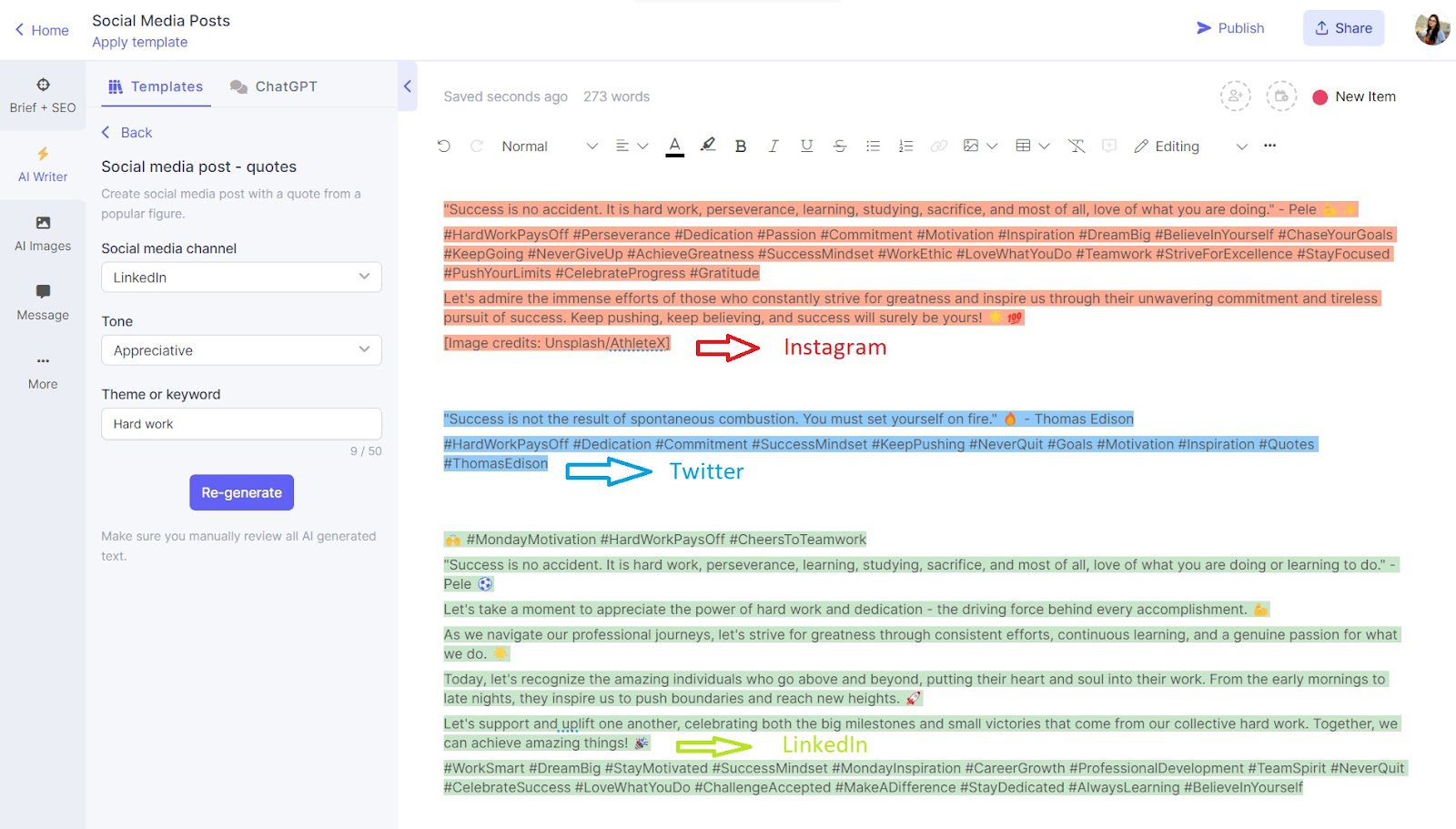
The challenges with using AI to repurpose content
Even though AI is a wonderful tool to use for repurposing content, there are some challenges you should be aware of.
Ensuring content quality and relevance
While AI algorithms excel at processing and analyzing large amounts of data, they may struggle to fully understand the context, nuances, and intent of the original content. This can result in inaccuracies, misinterpretations, or the generation of content that lacks clarity or coherence. AI algorithms may also face limitations in understanding complex language structures, idiomatic expressions, or domain-specific terminology, leading to subpar content output.
Maintaining consistency across different formats
While AI algorithms excel at generating content adaptations, they may struggle to ensure a consistent voice, tone, and messaging across various formats. Each format, whether it’s a video, infographic, or social media post, has its own requirements, limitations, and stylistic elements. AI algorithms may not fully grasp the nuances and subtleties of the original content, resulting in inconsistencies when adapting it to different formats. Additionally, the visual and interactive aspects of different formats may not align seamlessly with the textual content, making it difficult to maintain a cohesive brand identity and user experience.

Copyright and legal considerations
AI algorithms are designed to analyze, process, and generate content based on existing material. However, this raises concerns about potential copyright infringement and the unauthorized use of copyrighted content. AI algorithms may not inherently understand the legal intricacies of intellectual property rights and fair use principles. They might inadvertently generate content that violates copyright laws or fails to comply with licensing agreements. Additionally, repurposing content from different sources can complicate matters further, as the ownership and permissions for each piece of content may vary.
Ethical implications of AI content repurposing
There is a risk that AI-generated repurposed content may blur the lines between original and AI-generated work, leading to concerns about proper attribution and intellectual property rights. Additionally, the use of AI algorithms for content repurposing can create ethical dilemmas related to transparency and disclosure. Users may not be aware that they are engaging with AI-generated content, which can erode trust and lead to ethical concerns around informed consent and authenticity. Furthermore, AI algorithms might inadvertently perpetuate biases or create content that is misleading, offensive, or harmful. Content creators must exercise ethical responsibility to ensure the content generated by AI algorithms meets ethical standards and is aligned with the values and principles of their organization.
Wrapping Up
AI content repurposing is revolutionizing the way existing content is transformed into new formats and distributed across various channels. By leveraging AI technologies such as natural language processing, machine learning, and generative models, content creators and marketers can efficiently adapt and optimize their content for different platforms and audience preferences.
The benefits of AI content repurposing are manifold, including increased reach, enhanced engagement, and improved efficiency. However, challenges such as ensuring content quality, maintaining consistency, and navigating copyright and ethical considerations require careful attention. By striking a balance between AI automation and human oversight, organizations can unlock the full potential of AI content repurposing, delivering fresh, engaging content experiences to diverse audiences while upholding quality, relevance, and ethical standards.


